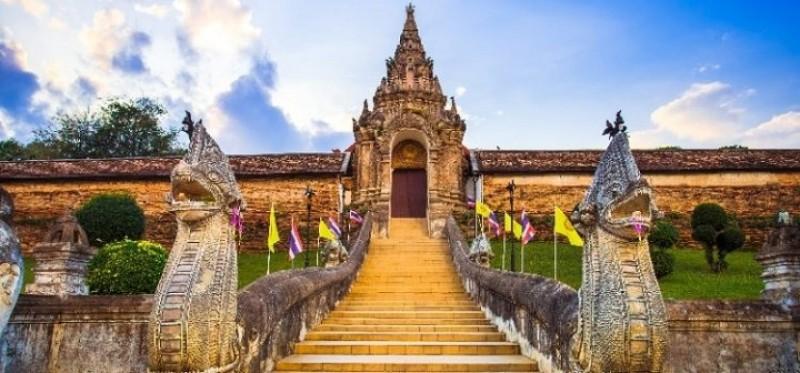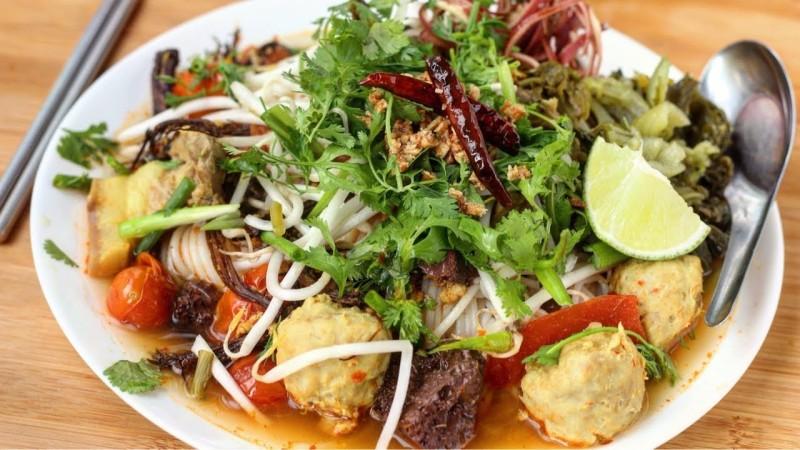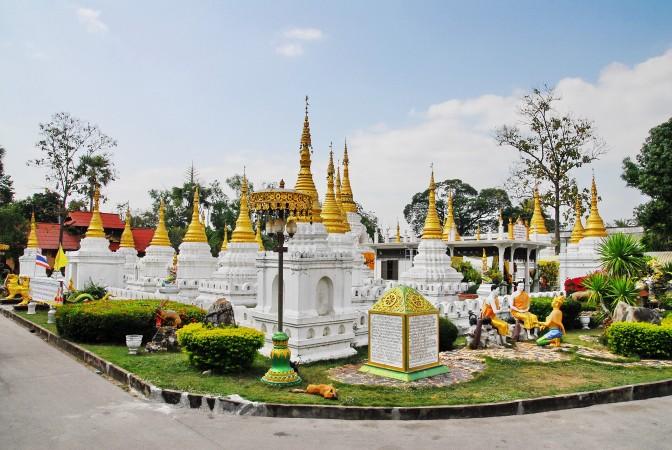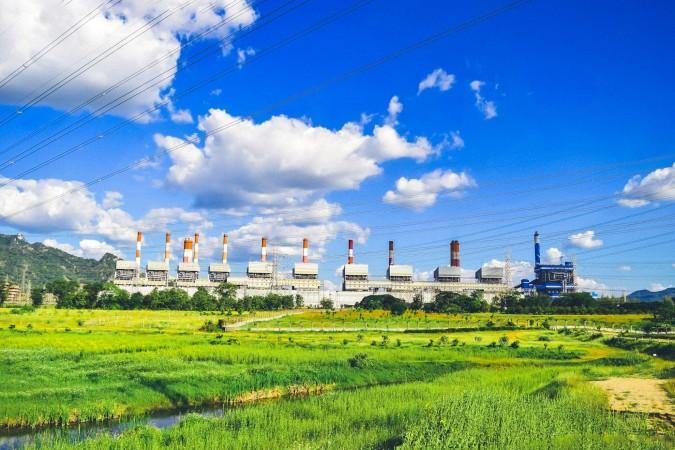Explore Lampang - Thailand Travel, Asia
Nestled in the heart of Northern Thailand, Lampang is a city that beautifully blends history, culture, and nature. Often overshadowed by its more famous neighbors, Lampang remains one of Thailand's hidden gems. This charming city invites travelers to step back in time and experience an authentic slice of Thai life. Whether you're wandering through its quaint streets lined with traditional teak houses or exploring its ancient temples, Lampang offers a serene and enriching escape from the hustle and bustle of more touristy destinations.
Population: Approximately 740,000 in 2018.
Economy: Lampang's economy thrives on agriculture, especially rice and teakwood, alongside tourism and local crafts. The city is also known for its ceramics, contributing significantly to its economic activities.
Landmarks: Famous for the Wat Phra That Lampang Luang, Ban Sao Nak, and Chae Son National Park.
Thailand

Overview of Lampang
History & Cultural Influence
Lampang's rich history dates back over a thousand years, making it one of the oldest cities in Thailand. Once an important trade center during the Lanna Kingdom, Lampang has preserved its cultural heritage with pride. One of the city's most significant historical landmarks is Wat Phra That Lampang Luang, a temple that stands as a testament to Lampang's ancient past. The history of Lampang is closely linked to that of the Lanna Kingdom and the Burmese influence that followed. This has shaped the city's architecture, art, and even its cuisine, creating a rich tapestry of cultural influences that visitors can still experience today.
Interaction with The Locals
Lampang is home to a population of around 740,000 people, predominantly of Thai ethnicity, with influences from the Lanna and Burmese cultures. The citizens of Lampang are known for their warm hospitality and strong community spirit. They maintain traditional lifestyles, blending modernity with age-old customs. The local dialect, a variant of Northern Thai, is widely spoken, and many residents are involved in agriculture, handicrafts, and small-scale businesses, reflecting the city’s rich cultural heritage and close-knit community.

Wat Chalermprakiat - © Norbert Braun
Top Attractions in Lampang
Historical Sites in Lampang
- Wat Phra That Lampang Luang: As one of Lampang's most revered religious sites, Wat Phra That Lampang Luang stands as a testament to the city's rich history. This ancient temple, known for its stunning Lanna-style architecture, is surrounded by tall teakwood walls and features intricate wood carvings and a gold-topped chedi. The temple is more than just a place of worship; it also represents Lampang's ongoing cultural legacy.
- Ban Sao Nak: Another iconic historical site is Ban Sao Nak, also known as the "House of Many Pillars." This historic teakwood mansion, supported by 116 wooden pillars, offers a unique glimpse into Lampang's architectural past. Built during the peak of the city's teak trade era, the house has been preserved as a museum.
Natural Wonders in Lampang
- Chae Son National Park: Chae Son National Park is a must-see natural attraction in Thailand. This expansive park is a paradise of hot springs, waterfalls, and lush forests. The park offers a tranquil escape into nature, making it an ideal destination for those seeking relaxation and adventure.
- Emerald Lake: Nestled within the national park, Emerald Lake is another natural wonder that draws visitors. The lake's breathtaking emerald waters, surrounded by lush woodland, make a tranquil and scenic backdrop. It’s a perfect spot for photography, bird-watching, or simply enjoying the peaceful ambiance of the area.

Wat Phra That Lampang Luang - © Thailand Tourism
Must-Try Dishes in Lampang
- Khao Soi: A Northern Thai classic, Khao Soi features a mix of crispy and soft egg noodles in a rich coconut curry. Served with chicken or beef and garnished with pickled mustard greens, lime, and shallots, it’s a flavorful dish that captures the essence of Lampang's cuisine.
- Nam Prik Ong: Nam Prik Ong is a hot chili dip prepared with minced pork, tomatoes, and spices. It’s typically enjoyed with fresh vegetables, sticky rice, or pork cracklings, offering a robust taste of Northern Thai flavors.
- Sai Ua (Northern Thai Sausage): Sai Ua is a wonderful sausage made with minced pork, herbs, and spices. Grilled to perfection, it’s commonly served with sticky rice or enjoyed on its own, highlighting Lampang’s culinary traditions.
- Khanom Jeen Nam Ngiao: This dish features soft rice noodles in a spicy, tangy broth made from tomatoes, pork, and dried red cotton flowers. Garnished with herbs, bean sprouts, and lime, Khanom Jeen Nam Ngiao is a hearty and flavorful meal.
- Gaeng Hang Lay: Gaeng Hang Lay is a rich and aromatic curry made with pork, garlic, ginger, and tamarind. This Northern Thai specialty has a distinctive taste, blending sweetness and spiciness in a comforting stew.
- Lampang’s Grilled Fish: Freshwater fish, often from the local rivers, is marinated with herbs and spices before being grilled to perfection. Served with a spicy dipping sauce and sticky rice, it’s a simple yet delicious representation of Lampang's local cuisine.
- Sticky Rice with Mango: Sticky Rice with Mango is a popular treat that mixes sweet coconut sticky rice and juicy mango slices. This dish is a delightful end to any meal, offering a perfect balance of sweetness and texture.

Khanom Jeen Nam Ngiao - © Phan Thuy Duong
Festivals & Local Celebrations
Lampang’s Horse Carriage Festival
Held annually in December, the Horse Carriage Festival is a unique celebration that honors Lampang’s historical identity as the "Horse Carriage City." The festival features parades of beautifully decorated horse carriages, traditional music, and cultural performances. Visitors can enjoy rides in these carriages, which are an enduring symbol of Lampang’s charm and heritage.
Lampang Elephant Festival
One of the most popular events in Lampang is the Lampang Elephant Festival, held annually at the Thai Elephant Conservation Center. This festival celebrates the deep bond between the people of Lampang and their elephants, which have played a significant role in the city’s history. Visitors can enjoy a variety of activities, including elephant parades, mahout demonstrations, and cultural performances. The festival is a great opportunity to learn about elephant conservation efforts while experiencing the local culture.
Songkran Festival (Thai New Year)
The Thai New Year, known as Songkran, is celebrated in Lampang with a mix of traditional and modern activities. Taking place in April, the festival involves water splashing, temple visits, and merit-making ceremonies. In Lampang, Songkran is celebrated with particular reference, with locals participating in religious rituals and community feasts, making it a time of renewal and joy.

Lampang Elephant Festival - © TAT Newsroom
What to Do in Lampang
- Temple Hopping: Lampang is home to numerous temples that showcase the city’s rich spiritual heritage. Visitors can embark on a temple-hopping tour, starting with the iconic Wat Phra That Lampang Luang, followed by Wat Chedi Sao, known for its 20 chedis (stupas), or Wat Pong Sanuk, a unique temple that blends Lanna, Burmese, and Chinese architectural styles.
- Explore the Ceramics Villages: Lampang is famous for its ceramics, and a visit to the ceramics villages offers a hands-on experience of this traditional craft. Visitors can watch artisans at work, learn about the pottery-making process, and even try their hand at creating their own ceramic pieces.
- Hot Air Balloon Ride: This activity offers breathtaking views of the city, its surrounding mountains, and lush green fields. The peaceful ascent provides a unique perspective of Lampang’s landscape, and it’s an excellent way to capture stunning aerial photographs of the region.
- Cycling Tours Around Lampang: Lampang’s relatively flat terrain and scenic countryside make it ideal for cycling tours. Rent a bike and explore the city’s historic sites, local markets, and riverside paths at your own pace. Cycling is a great way to discover Lampang’s hidden gems, interact with locals, and enjoy the fresh air.
Shopping in Lampang
- Kad Kong Ta Walking Street: Explore this vibrant weekend market for a variety of local crafts, street food, and unique souvenirs. The lively atmosphere makes it a great place to experience Lampang’s culture.
- Talat Kao Market: Shop at one of Lampang’s oldest markets, offering fresh produce, traditional snacks, and handcrafted items. It’s a perfect spot for discovering local products and enjoying the city’s historic charm.
- Lampang Ceramic Shops: Visit local ceramic shops to find beautifully crafted pottery and traditional ceramics. These shops offer a range of items from decorative pieces to functional ware, showcasing Lampang’s renowned ceramic art.
- Traditional Textile Stores: Browse stores specializing in handwoven textiles, where you can find intricate designs and vibrant colors. These textiles reflect the rich heritage of Northern Thai weaving.
- Lampang Handicraft Center: This center features a collection of local handicrafts, including wood carvings, silver jewelry, and traditional Lanna arts. It’s an excellent place to purchase authentic Lampang crafts.

Wat Chedi Sao - © Wikimedia
Weather in Lampang: Best Time to Visit
Lampang enjoys a tropical savanna climate, featuring distinct wet and dry seasons.
Dry Season in Lampang
The dry season is the most popular time to visit Lampang. Expect clear skies, lower humidity, and cooler temperatures ranging from 25°C to 35°C (77°F to 95°F). This is ideal weather for outdoor activities, exploring the city, and visiting landmarks. The comfortable climate also makes it a peak period for tourism, with various festivals and events adding to the appeal.
Rainy Season in Lampang
During the rainy season, Lampang experiences frequent showers and higher humidity, with temperatures between 25°C and 32°C (77°F to 90°F). While rain can be unpredictable, it revitalizes the landscape and offers lush greenery. This season is less crowded, making it a great time for those who prefer a quieter experience. Tourist activities are less congested, and you might find better deals on accommodation and tours.

Any day is a good day to visit Lampang - © Nopparuj Lamaikul
Culture Etiquette in Lampang
- Wai Greeting: The wai is a traditional Thai greeting in which you clasp your hands together in a prayer-like motion and bend slightly. This respectful gesture is used in various interactions, especially with elders and those in authority.
- Temple Etiquette: When visiting temples such as Wat Phra That Lampang Luang or Wat Phra Kaew Don Tao, dress modestly. Cover your shoulders and knees, and remove your shoes before entering temple buildings. It’s also respectful to maintain a quiet and calm demeanor inside the temple.
- Monk Interactions: If you encounter monks, especially in temples, show respect by avoiding physical contact. Women should avoid touching or handling goods directly to monks.When offering food or donations, place items respectfully on a surface rather than handing them over directly.
- Respect for the Monarchy: Show respect for the Thai royal family in conversations and public settings. Negative comments or disrespectful behavior towards the monarchy is considered highly inappropriate.
Essential Travel Information
Getting Around Lampang
- Songthaews: These shared taxis, or songthaews, are a popular and affordable way to travel within the city. They follow specific routes and are a common choice for both locals and visitors.
- Tuk-Tuks: For a more unique experience, ride a tuk-tuk. These three-wheeled vehicles are a fun and convenient way to explore Lampang’s attractions, however, remember to always agree on a fare beforehand.
- Bicycles and Motorbikes: Bicycles or motorbikes are an excellent way to explore Lampang at your own pace. Many rental shops offer bikes and scooters for daily use, allowing you to navigate the city and surrounding areas easily.
- Taxi Services: Taxis are available for more private transportation needs. While less common than songthaews or tuk-tuks, they provide a comfortable way to travel longer distances or visit less accessible locations.

Wai Greeting, traditional Thai greeting - © DanTri
ATM & Banking Services
Lampang offers convenient banking and ATM services to meet your financial needs. Numerous ATMs are scattered throughout the city, particularly in popular tourist areas and shopping centers, allowing easy access to cash with international credit and debit cards. Banking facilities provide a range of services, including currency exchange and account management. Most businesses, including hotels and restaurants, accept major credit and debit cards, though carrying some cash is advisable for smaller establishments or markets.
Where to Stay in Lampang
- Luxury Hotels: For a premium experience, Lampang offers several high-end hotels with luxurious amenities and exceptional service. These establishments provide elegant rooms, fine dining options, and often feature additional facilities such as spas and swimming pools.
- Mid-Range Hotels: If you prefer comfort without breaking the bank, there are numerous mid-range hotels in Lampang. These options offer well-appointed rooms and good facilities at reasonable prices, making them ideal for travelers seeking a balance of comfort and value.
- Budget Lodgings: Budget travelers will find a variety of guesthouses and budget hotels that offer basic amenities at affordable rates. These accommodations provide a cozy and economical way to experience Lampang without compromising on essential comforts.
- Homestays: For a more immersive and authentic experience, homestays in Lampang offer a chance to live with local families. These accommodations provide a glimpse into daily life, traditional customs, and local cuisine, making your stay both enriching and memorable.
Articles for you

Explore Yala National Park - Sri Lanka Travel, Asia
Tucked away in Sri Lanka’s southeastern corner, Yala National Park is where wild nature meets deep tradition. Known worldwide for its leopard population, the park is also home to elephants, sloth bears, crocodiles, and hundreds of bird species. Beyond wildlife, Yala opens doors to a cultural landscape dotted with ancient temples, Buddhist ruins, and coastal villages. For travelers seeking more than just a safari, Yala offers a chance to explore eco-tourism, local communities, and sacred heritage sites.
Population: The Yala National Park area doesn’t have a human population.
Economy: The economy around Yala National Park thrives on a blend of eco-tourism, agriculture, and local services. Safari tours, eco-lodges, and cultural experiences drive steady income for nearby towns like Tissamaharama and Kataragama, supporting thousands of families.
Landmarks: Famous for Block I of Yala and wildlife encounters, including elephants, sloth bears, crocodiles, and exotic bird species.

Explore Galle - Sri Lanka Travel, Asia
Nestled on Sri Lanka’s southern coastline, Galle is a vibrant city where history meets the sea. Its cobbled streets, colonial architecture, and serene beaches make it a must-visit destination for travelers seeking a blend of culture, adventure, and relaxation. A UNESCO World Heritage site, Galle captivates visitors with its Dutch Fort, bustling markets, and friendly locals. Whether you’re exploring the ramparts at sunset or savoring fresh seafood by the shore, Galle promises an unforgettable journey into Sri Lanka’s heritage.
Population: Approximately 113,000 in 2023.
Economy: Galle’s economy thrives on tourism, trade, and fisheries. The city’s historic fort, colonial architecture, and coastal charm draw thousands of international visitors each year, making tourism its main economic driver. Fishing remains vital for local livelihoods, supplying fresh seafood across the region.
Landmarks: Famous for the Galle Fort, Dutch Reformed Church & Maritime Museum, and Unawatuna Beach.

Explore Bentota - Sri Lanka Travel, Asia
Nestled along Sri Lanka’s southwestern coast, Bentota is a tropical paradise that blends golden beaches, vibrant culture, and thrilling adventures. Famous for its calm waters, luxury resorts, and scenic river estuary, Bentota has become a top destination for travelers seeking both relaxation and authentic experiences. From serene beach walks at sunrise to adrenaline-pumping water sports, this coastal town offers a perfect balance of leisure and exploration. With its proximity to Colombo and Galle, Bentota is easy to reach, making it an ideal stop for both short escapes and extended holidays.
Population: Approximately 37,000 in 2023.
Economy: Bentota’s economy thrives mainly on tourism, which drives local businesses such as hotels, restaurants, and wellness retreats. The town also benefits from fishing, coconut cultivation, and handicrafts like wood carving and batik textiles. Many residents rely on the growing demand for water sports and Ayurvedic treatments, making tourism the backbone of both income and employment in the area.
Landmarks: Famous for Bentota Beach, Bentota River Safari, and Kande Vihara Temple.

Explore Mirissa - Sri Lanka Travel, Asia
Mirissa is a charming coastal town on Sri Lanka’s southern shoreline. Known for its golden beaches, turquoise waters, and vibrant marine life, it has become a must-visit stop for travelers exploring the island. Many come for whale watching, surfing, and sunset views at Coconut Tree Hill, but Mirissa offers much more than postcard beauty. The fishing boats you see anchored by the bay carry generations of stories. Local traditions, delicious cuisine, and a laid-back rhythm of life shape every visitor’s experience.
Population: Approximately 4,700 in 2023.
Economy: Mirissa’s economy is largely shaped by its coastal location. Fishing has long been the backbone of local livelihoods, with generations relying on the Indian Ocean for income. In recent decades, tourism has become the main driver of growth, thanks to whale watching, surfing, and beachside hospitality.
Landmarks: Famous for Mirissa Beach, Coconut Tree Hill, and Parrot Rock Bridge.

Explore Nuwara Eliya - Sri Lanka Travel, Asia
Tucked away in the Central Highlands of Sri Lanka, Nuwara Eliya is often called “Little England”. With its rolling tea plantations, cool misty mornings, and colonial charm, this mountain town feels like a step into another world. Travelers come here to breathe fresh air, walk through flower gardens, sip the finest Ceylon Tea, and enjoy a pace of life far from the island’s busy cities. Whether you’re drawn by scenic landscapes, heritage architecture, or the warmth of its people, Nuwara Eliya is a destination that blends nature, culture, and history in perfect harmony.
Population: Approximately 781,000 in 2023.
Economy: Nuwara Eliya’s economy thrives mainly on tea production, as it sits in the heart of Sri Lanka’s central highlands, famous worldwide for Ceylon Tea. The city also benefits from a growing tourism industry, attracting visitors with its colonial charm, cool climate, and scenic landscapes.
Landmarks: Famous for Gregory Lake, Hakgala Botanical Garden, and Victoria Park.

Explore Sukau - Malaysia Travel, Asia
Nestled on the banks of the Kinabatangan River in Sabah, Malaysian Borneo, Sukau is a destination where wildlife, culture, and conservation come together. Known as one of Asia’s top spots for river safaris and eco-tourism, this quiet village offers a front-row seat to encounters with Bornean orangutans, pygmy elephants, proboscis monkeys, and exotic birdlife.
Population: Approximately 1,400 in 2019.
Economy: Sukau’s economy is shaped by its riverine location and natural resources. Traditionally, the Orang Sungai community relied on fishing, small-scale farming, and forest gathering for their livelihood. Today, the village has shifted toward eco-tourism, with river cruises, jungle trekking, and homestays providing income.
Landmarks: Famous for the Kinabatangan River cruises, Gomantong Caves, and Ox-bow lakes and wetlands.
